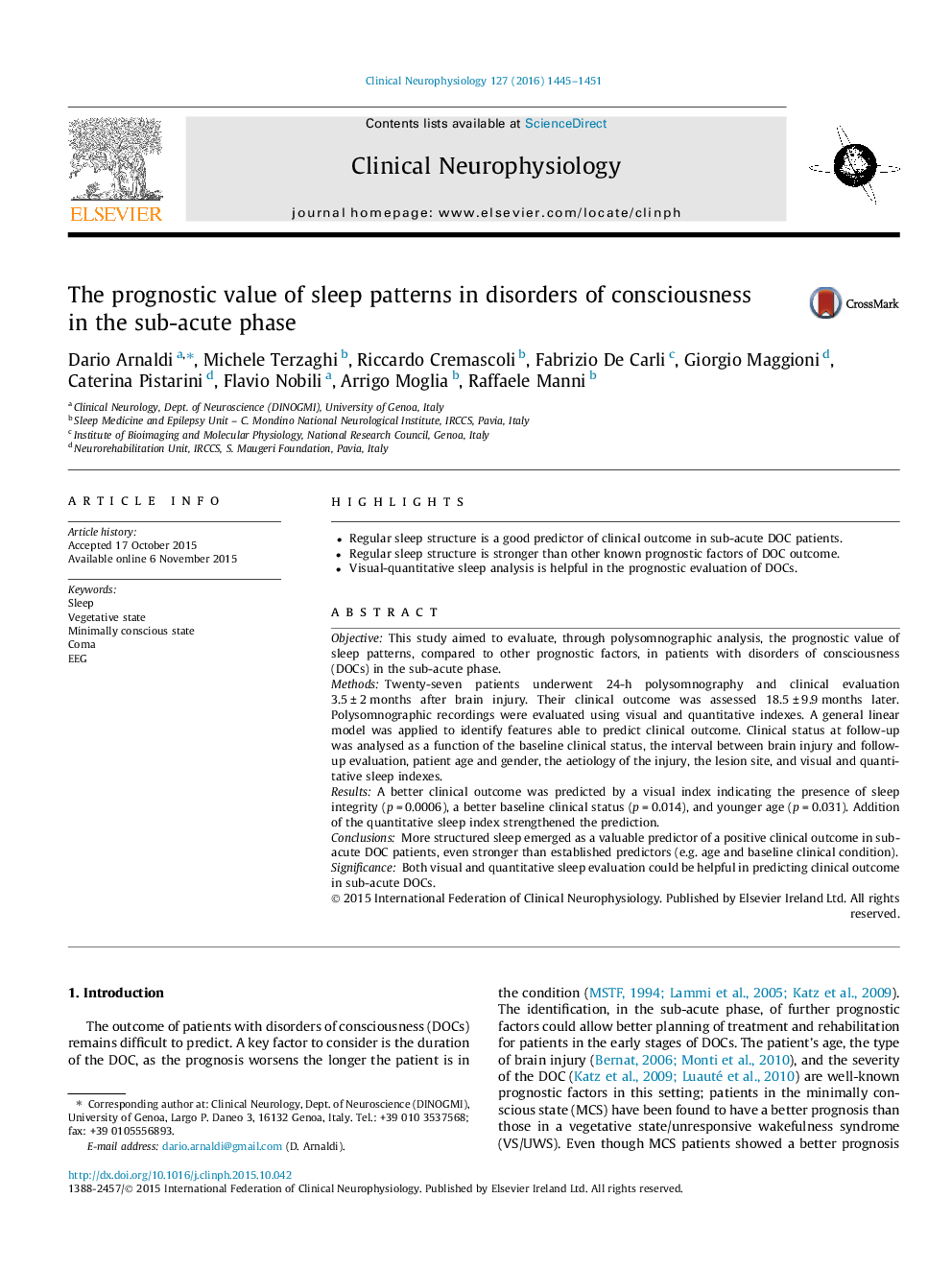| Article ID | Journal | Published Year | Pages | File Type |
|---|---|---|---|---|
| 6007616 | Clinical Neurophysiology | 2016 | 7 Pages |
â¢Regular sleep structure is a good predictor of clinical outcome in sub-acute DOC patients.â¢Regular sleep structure is stronger than other known prognostic factors of DOC outcome.â¢Visual-quantitative sleep analysis is helpful in the prognostic evaluation of DOCs.
ObjectiveThis study aimed to evaluate, through polysomnographic analysis, the prognostic value of sleep patterns, compared to other prognostic factors, in patients with disorders of consciousness (DOCs) in the sub-acute phase.MethodsTwenty-seven patients underwent 24-h polysomnography and clinical evaluation 3.5 ± 2 months after brain injury. Their clinical outcome was assessed 18.5 ± 9.9 months later. Polysomnographic recordings were evaluated using visual and quantitative indexes. A general linear model was applied to identify features able to predict clinical outcome. Clinical status at follow-up was analysed as a function of the baseline clinical status, the interval between brain injury and follow-up evaluation, patient age and gender, the aetiology of the injury, the lesion site, and visual and quantitative sleep indexes.ResultsA better clinical outcome was predicted by a visual index indicating the presence of sleep integrity (p = 0.0006), a better baseline clinical status (p = 0.014), and younger age (p = 0.031). Addition of the quantitative sleep index strengthened the prediction.ConclusionsMore structured sleep emerged as a valuable predictor of a positive clinical outcome in sub-acute DOC patients, even stronger than established predictors (e.g. age and baseline clinical condition).SignificanceBoth visual and quantitative sleep evaluation could be helpful in predicting clinical outcome in sub-acute DOCs.
